May 21, 2025 | 11:55 GMT +7
May 21, 2025 | 11:55 GMT +7
Hotline: 0913.378.918
May 21, 2025 | 11:55 GMT +7
Hotline: 0913.378.918
Tien Giang is the largest fruit-growing region in the Mekong Delta, with around 87,000 hectares of land devoted to durian planting. MARD and China's General Administration of Customs (GACC) signed a Protocol on phytosanitary requirements for Vietnam’s durians exported to China. The protocol formally paves the way for durian from Vietnam to join the Chinese market.
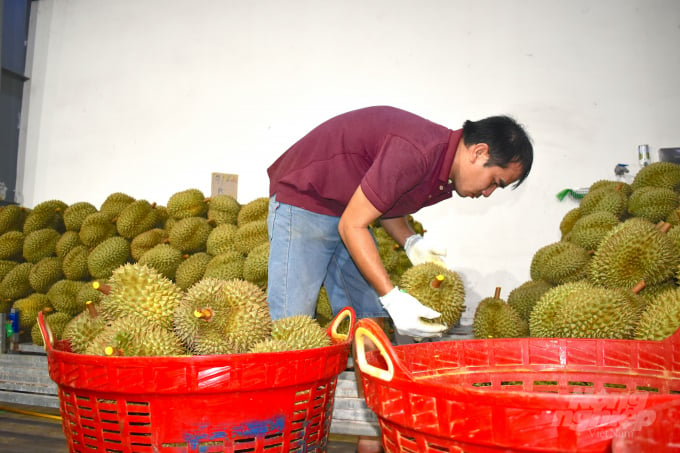
The Ministry of Agriculture and Rural Development and the General Administration of Customs of China have signed a Protocol on phytosanitary requirements for Vietnam’s durians exported to China. Photo: Minh Dam.
To maintain food safety, hygiene, and phytosanitary requirements while exporting fruit to China, Tien Giang's competent departments have assisted farmers in constructing standard planting areas. Ms. Vo Thi Kim Phuong, Deputy Director of the Subdepartment of Crop Production and Plant Protection of Tien Giang province, stated that it has actively collaborated with local authorities to develop planting area codes for key fruits exported to China, the United States, South Korea, Japan, and Australia, among others.
Currently, the province has 119 planting area codes and 26 newly planted area codes with a total area of over 613ha for the cultivation of five types of trees: durian, dragon fruit, chili, jackfruit, and pomelo. Some of which have enticed businesses and cooperatives to support the consumption.
Several farmers in Tien Giang have expressed their delight at the official export of durian to China.
Mr. Nguyen Dinh Du, Deputy Director of My Long Cooperative, stated, "Farmers are informed of the needs and export standards of international markets, with the Chinese market being the first. Therefore, some farmers also engaged in training on pesticide usage journaling, identifying prohibited agents, and permitted doses, among others".
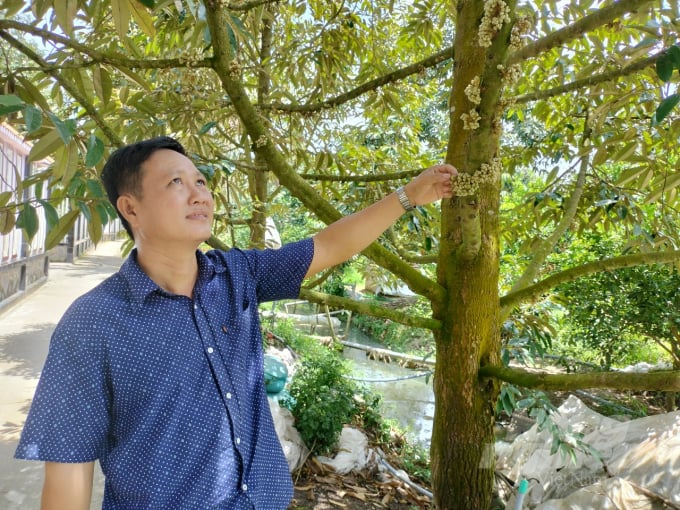
Mr. Nguyen Dinh Du, Deputy Director of My Long Agricultural Service Cooperative shared that members are building areas to plant and produce durian according to VietGAP standards for export to the Chinese market. Photo: Minh Dam.
Mr. Du elaborated that durian producers in the region in the past were scattered and small, with limited capacity, so the products were not guaranteed.
The fact that durian and certain other fruits can no longer be exported through the unofficial channel has awoken several local producers in recent years. In addition to participating in the formulation of planting area codes, they volunteered for VietGAP training courses.
As a result of the saline intrusion in 2020, the majority of durian farmers have determined to regularly attend training courses that guide to enhance durian care before, during, and after the salt drought, recognizing pests and diseases, as well as pruning procedures, root incubation during the warm season, etc.
In the context of escalating material costs, people use organic fertilizers such as cow, chicken, and pig manure to fertilize their trees, which is both cost-effective and beneficial to the tree's durability and health.
Currently, several farmers in the durian region in My Long commune have either constructed planting area codes or actively planted durian by VietGAP requirements to develop a raw material area encouraging businesses to participate in long-term underwriting.
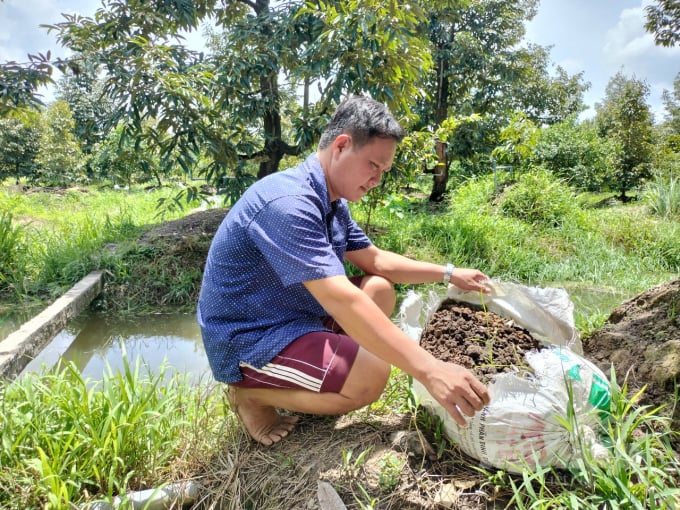
In the growing area of My Long Agricultural Service Cooperative, most people use organic fertilizers to fertilize trees to reduce costs and improve the soil. Photo: Minh Dam.
People also want the cooperative to provide a focal point for exporting industries and businesses to sell at a constant price. Some are still hesitant to join VietGAP because they are uncertain about the output. We would like to welcome businesses to learn more about the raw material area the cooperative is constructing. Technically, people know how to do it, but if the outcome is definite, we can easily motivate them to engage more", said Mr. Du.
Mr. Nguyen Van Sang, Chairman of the People's Committee of Tam Binh Commune in the Cai Lay district, stated that since the establishment of sluices and dams along the 864 provincial road to prevent saltwater intrusion, farmers are overjoyed because they no longer have to worry about the saltwater intrusion. After the drought - salinity of 2020, the majority of durian gardens have recovered. Tam Binh commune is now cooperating with provincial officials to help certain individuals in establishing area codes for durian plants intended for export to China. Notably, businesses from Ho Chi Minh City are underwriting the items in the growing area.
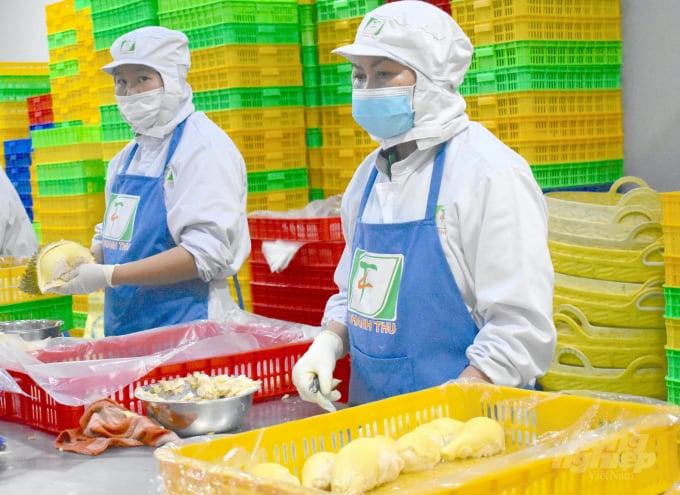
Durian fruit is split into yellow pulps for export. Photo: Minh Dam.
Not only the Cai Lay durian producing region but also other areas in the province of Tien Giang are actively communicating and organizing farmers to join in developing the planting area code to officially export durian to China. Ms. Nguyen Thi Diem Thuy, an official in charge of commune agriculture in An Thai Trung commune, Cai Be district, stated, "We have cooperated with the Department of Agriculture and Rural Development to find and generate planting area codes for 1,075 families on 531ha. In particular, 28 more households have submitted applications for VietGAP cultivation. The agency is funding a durian export firm in the region so that it may collaborate with local growers.
According to the Tien Giang Department of Agriculture and Rural Development, between 2018 and the end of 2021, the province held 810 communication events on the project of developing durian trees in Tien Giang province by 2025 and training on planting and care techniques, handling off-season flowering, pest and disease management on durian trees, a VietGAP-oriented production process, and durian care techniques before, during, and after salinity drought, among others.
In addition, the coordination of important sectors and units in providing timely information on production status, pests and diseases, markets, and export market needs assists, farmers, in perceiving, managing, and approaching output in accordance with market requirements.
Translated by Linh Linh
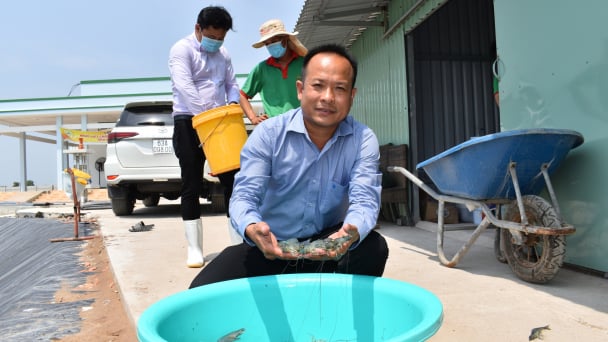
(VAN) One of the key factors for businesses to effectively take advantage of tariff preferences under these FTAs is the rules of origin.
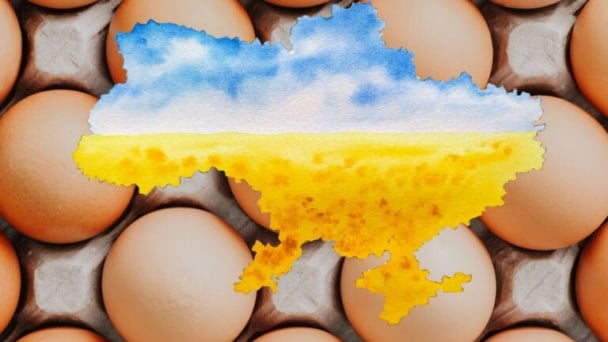
(VAN) Oliyar, a prominent Ukrainian oil and fat manufacturer, has revealed plans to build a farm for 2.3 million laying hens in the Lviv region. The additional production quantities promise to change the competitive landscape of the egg market of the Eastern Europe region.
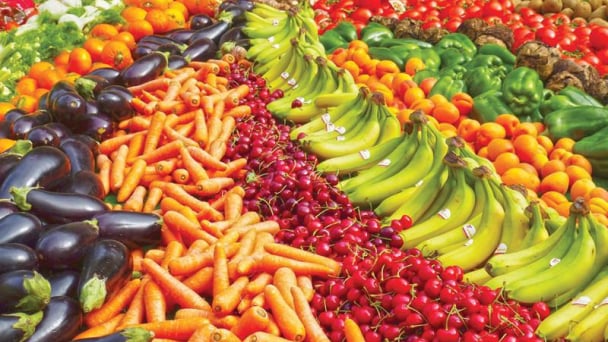
(VAN) On May 15, Ministry of Agriculture and Environment of Vietnam hosted the 'Connecting Vietnam - Germany agricultural, forestry and fishery trade' seminar in Berlin, Germany.

(VAN) In the face of counterfeit and imitation products, Khanh Hoa Salanganes Nest Company hopes for the prompt completion of the legal framework, strict enforcement against violations, and protection of the bird’s nest brand.

(VAN) Japan's efforts to lower the price of rice through the release of its stockpile may finally be making some progress, albeit at a snail's pace.

(VAN) U.S. tariffs are not only a 'shock', but also an opportunity for Vietnamese businesses to renew their mindset toward comprehensive development.

(VAN) As Bac Giang lychee enters the harvest season, Minister Do Duc Duy expects that the fruit will contribute greatly to agricultural exports due to standardized production and deep processing.